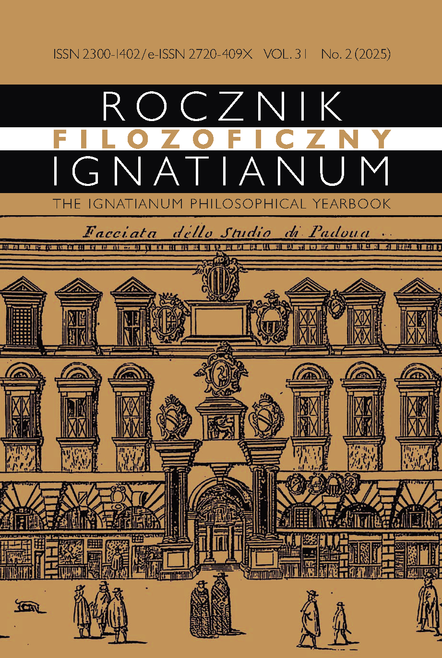The Arcadian Myth in Jan Kochanowski’s Saint John’s Eve Song About the Festive Night as a Synthesis of Cultural Heritage
Abstract
The Arcadian myth has always represented the concept of an ideal human life. This article shows that the Arcadian model unites many humanistic trends and traditions vividly manifested in idyllic writing. The Arcadia presented by Virgil, Theocritus, Sanazzaro, and Kochanowski showed a codified, universal system of values. This is clearly seen in Saint John’s Eve Song About the Festive Night. This series of poems deals with the relationship between the Arcadian space and Kochanowski’s work. This relationship significantly contributes to the myth of the common cultural heritage while showing the reinterpretation of the Arcadian vision in Old Polish literature. The topic of Arcadia relates to the locus amoenus and the relationship between classical pastoral poetics and Polish landowning culture, recorded in the native idyllic tradition. The most significant of the textual examples presented was Sobótka, which can be interpreted in various ways. In conclusion, the following discourses are included in the work: Christian, classicist, folk, pagan, and mythological which make us treat the Renaissance poet’s work as a synthesis of various humanistic ideas that guided by the University of Padua since its inception.
References
Kochanowski Jan, Pieśni, ed. Ludwika Szczerbicka-Ślęk (Wrocław: Ossolineum, 1970).
Kochanowski Jan, Trifles, Songs and Saint John’s Eve Song, transl. Michael J. Mikoś (Lublin: Wydawnictwo KUL, 2018).
Sanazzaro Jacopo, Arcadia (Milano: La Società Tipografica de’ Classici Italiani, 1806).
Virgil, The eclogues, transl. Anthony S. Kline, https://www.poetryintranslation. com/PITBR/Latin/VirgilEclogues.php#anchor_Toc53323925 (accessed on 12.09.2022).
Chaudhuri Sukanta, Pastoral Poetry of the English Renaissance (Manchester: University Press, 2016).
Haywood Eric, Rinascimento e barocco. Roma, Napoli e altri viaggi Per Mauro de Nichilo. ed. Davide Canfora, Claudia Corfiati (Bari: Cacucci Editore, 2017).
Krzewińska Anna, Sielanka staropolska, jej początki, tradycje i główne kierunki rozwoju (Warszawa–Poznań–Toruń: PWN, 1979).
Michałowska Teresa, Słownik literatury staropolskiej (Wrocław–Warszawa–Kraków: Ossolineum, 1979).
Miechowita Maciej, Opis Sarmacji azjatyckiej i europejskiej, introd. Henryk Barycz, transl. Tadeusz Bieńkowski (Wrocław: Ossolineum, 1972).
Nowicka-Jeżowa Alina, Spotkania w labiryncie. Szkice o poezji Jana Kochanowskiego (Kraków: Polska Akademia Umiejętności, 2019).
Pelc Janusz, Kochanowski. Szczyt renesansu w literaturze polskiej (Warszawa: PWN, 2001).
Stroh Wilfried, Łacina umarła, niech żyje łacina! Mała historia wielkiego języka, transl. Aleksandra Arnd (Poznań: Wydawnictwo Poznańskiego Towarzystwa Przyjaciół Nauk, 2013).
Śnieżko Dariusz, Mit wieku złotego w literaturze polskiego renesansu. Wzory – warianty – zastosowania (Warszawa: Wydawnictwo Naukowe Semper, 1996).
Ziomek Jerzy, Renesans (Warszawa: PWN, 2012).
Ford Philip, Tylor Andrew, “Introduction: Neo-Latin and the Pastoral”, Canadian Review of Comparative Literature 1-2, vol. 33 (2006): 5–16.
Copyright (c) 2025 University Ignatianum in Cracow

This work is licensed under a Creative Commons Attribution-NoDerivatives 4.0 International License.
The Yearbook only accepts materials for publication that are free of all conflicts of interest, and that in no way involve conflicts over authorship, copyright, etc. The Editors will take action against any cases of plagiarizing, ghostwriting1, guest/honorary authorship2, etc. Where co-authored work is concerned, the Author listed first is expected to take responsibility for the submission, and is required to make clear the contributions of all of the Co-Authors involved. In the event of the publication owing its existence to funding dedicated to this purpose, this fact should be made clear: e.g. in any note of thanks/acknowledgement, or in a footnote, etc. Explicit notification should be given of any form of reprinting, with the appropriate evidence of permission to publish being furnished as required. Any impropriety on the part of Authors/Reviewers risks exposing them to appropriate responses from the relevant institutions.
______
1 This term refers to instances of a person who has made an essential contribution being omitted from the list of authors, or from notes conveying gratitude and/or acknowledgement.
2 This occurs when a person who has made either an insignificant contribution or no contribution at all nevertheless appears on the list of authors.





